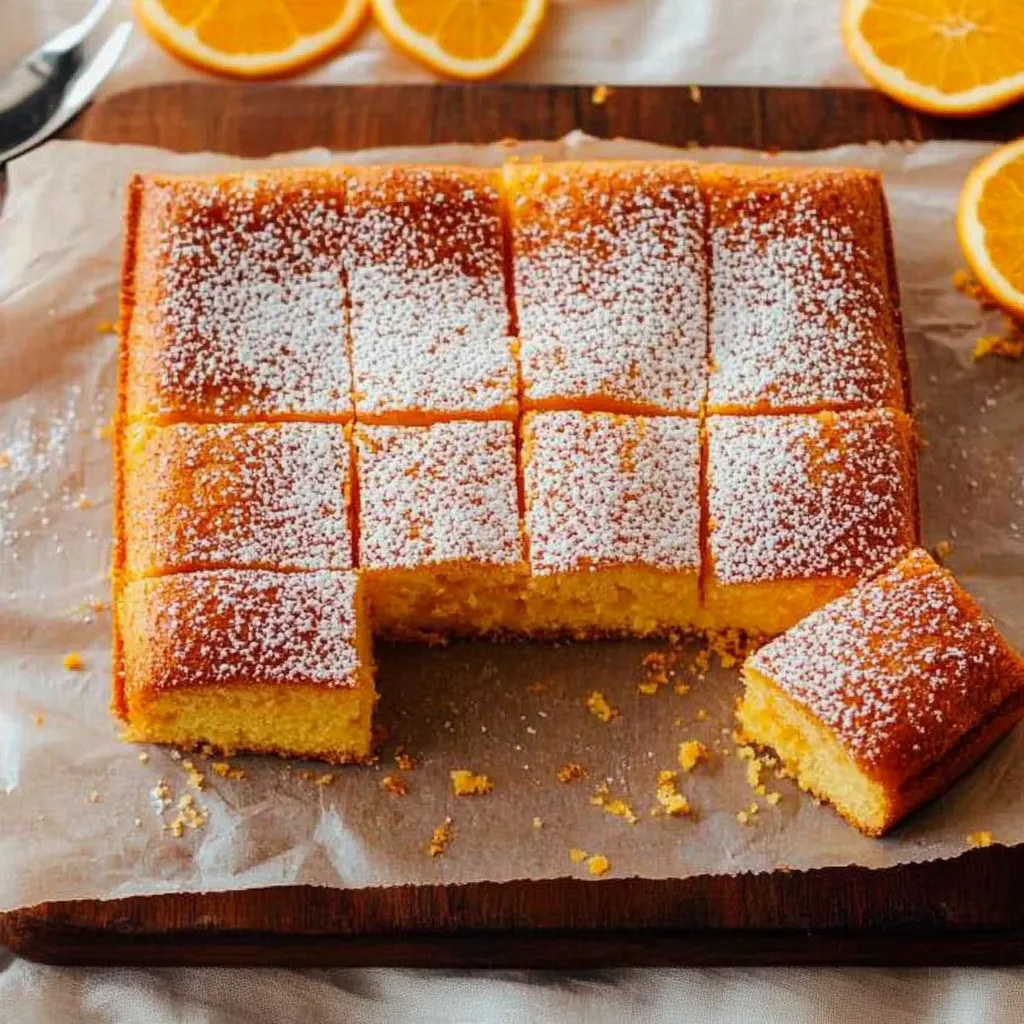 Pin it
Pin it
This bright and tender Portuguese orange cake captures pure sunshine in every bite and is a longtime favorite when craving a taste of something both homey and special. Bursting with fresh orange flavor and a uniquely moist crumb thanks to whipped egg whites folded in, it is a cheerful centerpiece for afternoon coffee or casual gatherings alike.
I made this on a whim the first winter my orange tree bore fruit and since then it has become my go-to for brightening even the cloudiest days. Every time I serve it, someone always asks for a second slice.
Ingredients
- Butter: At room temperature for richness and tender crumb. Be sure to use real butter for best flavor.
- Granulated sugar: To provide sweetness and help with structure. Use fine white sugar that dissolves easily.
- Large eggs: Separated for maximum lift. The yolks add richness while the whipped whites give that classic cakey lightness.
- Fresh oranges: For zest and juice. Go for sweet, juicy oranges and scrub the skins before zesting for intense flavor.
- All-purpose flour: For structure. Select a high-quality flour that is unbleached if possible for a better cake texture.
- Baking powder: Acts as the main leavening agent. Check yours is fresh for a good rise.
- Confectioners sugar: For dusting, which adds a simple elegance. Use a fine mesh sieve for the prettiest finish.
Step-by-Step Instructions
- Prep the Pan:
- Grease an eight-inch square baking dish well with butter or line with parchment paper, making sure the sides are covered to prevent sticking and for easy cake removal.
- Cream the Butter and Sugar:
- Beat softened butter and granulated sugar together using an electric mixer on medium speed for about two minutes until the mixture is very pale and fluffy. This step incorporates air, which helps create a tender crumb.
- Add the Egg Yolks:
- Add the egg yolks one at a time, beating each one in fully before the next. This ensures even richness and helps stabilize the batter.
- Incorporate the Orange:
- Grate the zest from all three oranges directly into the bowl to catch the fragrant oils, and then squeeze in the juice as well. Mix on low speed at first, as it will look curdled. Increase to medium and beat until the mixture comes together and looks creamy again, scraping the bowl so everything incorporates evenly.
- Blend the Dry Ingredients:
- In a separate bowl, whisk the all-purpose flour and baking powder thoroughly. Keeping these dry ingredients evenly mixed is crucial for a uniform rise and crumb.
- Combine Wet and Dry:
- With mixer on low, slowly beat the flour mixture into the orange batter only until just combined. Overmixing will lead to a tough cake, so stop as soon as the dry streaks disappear.
- Whip and Fold Egg Whites:
- Using a very clean bowl, whip egg whites with a mixer until they reach stiff peaks that stand up straight when the beaters are lifted. Gently fold in one-third of the whipped whites to loosen the batter, then carefully fold in the remaining whites in two portions using large gentle strokes to keep as much air as possible for a light cake.
- Bake the Cake:
- Pour the batter into the prepared pan and smooth the top lightly. Bake in the center of a preheated 350 Fahrenheit oven for thirty-five to forty-five minutes. Check for doneness by lightly pressing the top, which should spring back, or insert a skewer, which should come out clean or with moist crumbs. The internal temperature should read about one hundred ninety Fahrenheit if you use a thermometer.
- Cool and Finish:
- Allow the cake to cool completely in the pan on a wire rack. Dust generously with confectioners sugar right before serving for a touch of extra sweetness and a lovely finish.
 Pin it
Pin it
The oranges really steal the show here. Their zest fills the kitchen with a perfume I almost wish I could bottle, while the juice adds natural sweetness that makes this cake such a memorable bite. The first time my youngest helped zest an orange for this cake, they laughed at getting a little sticky and now always ask to do the zesting when we bake together.
Storage Tips
Store any leftovers in an airtight container at room temperature for up to three days. For longer keeping, refrigerate well-wrapped cake slices for up to five days, bringing them to room temperature before serving. If freezing, wrap individual slices tightly and freeze up to two months, then thaw at room temperature and dust with sugar just before eating for the freshest taste.
Ingredient Substitutions
If you do not have fresh oranges, good quality bottled orange juice will work in a pinch, but the zest is essential for real flavor. Try lemon for a slightly different citrus profile, or swap in half whole wheat flour for a heartier texture. If baking powder is unavailable, a mix of baking soda and a touch of vinegar can help create lift.
Serving Suggestions
This cake is excellent served simply with hot tea or coffee. For a festive touch, top each slice with a dollop of freshly whipped cream or a spoonful of orange marmalade. For special occasions, add a few candied orange slices or a drizzle of chocolate glaze for a decadent twist that pairs perfectly with the bright citrus flavors.
 Pin it
Pin it
This cake is so simple but holds a beautiful story and wonderful flavors in each bite. If you have never baked with fresh orange zest before, you are in for a real treat. It is one of those recipes that you will find excuses to make again and again for both celebrations and afternoons when you just want to brighten the day.
Frequently Asked Questions
- → What makes Portuguese orange cake so moist?
Generous amounts of fresh orange juice and zest combined with softened butter give this cake a moist crumb.
- → Can I use other citrus fruits instead of oranges?
Yes, lemons or tangerines work well, but orange offers the classic sweet and tangy balance.
- → Why separate the eggs for this cake?
Beating whites separately lightens the batter, resulting in a soft and fluffy texture.
- → How do I know when the cake is done?
The top will spring back, and a tester will come out clean or with moist crumbs at 190ºF.
- → Is confectioners’ sugar dusting necessary?
No, but it adds a delicate sweetness and classic look. It can be omitted if preferred.
